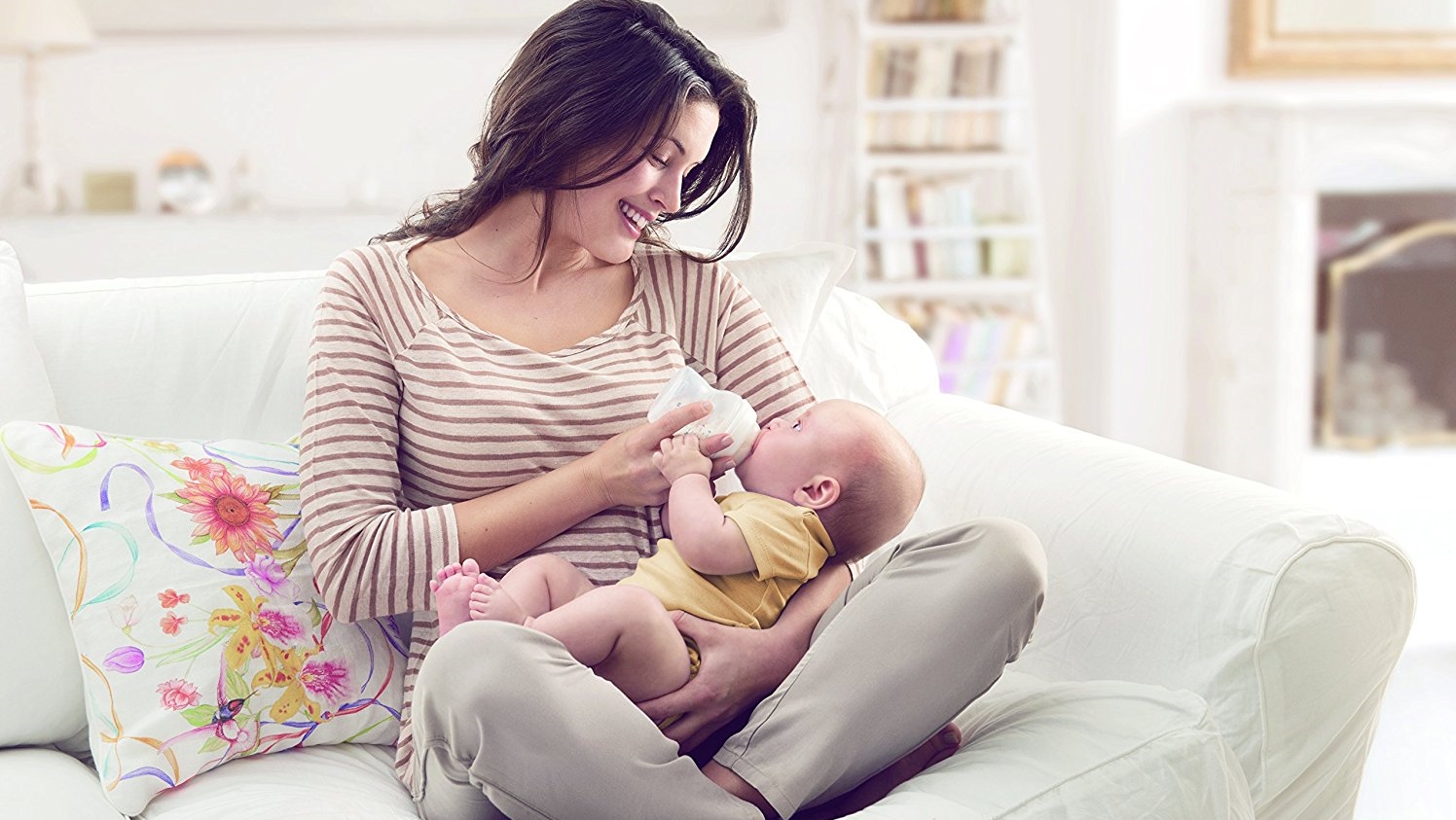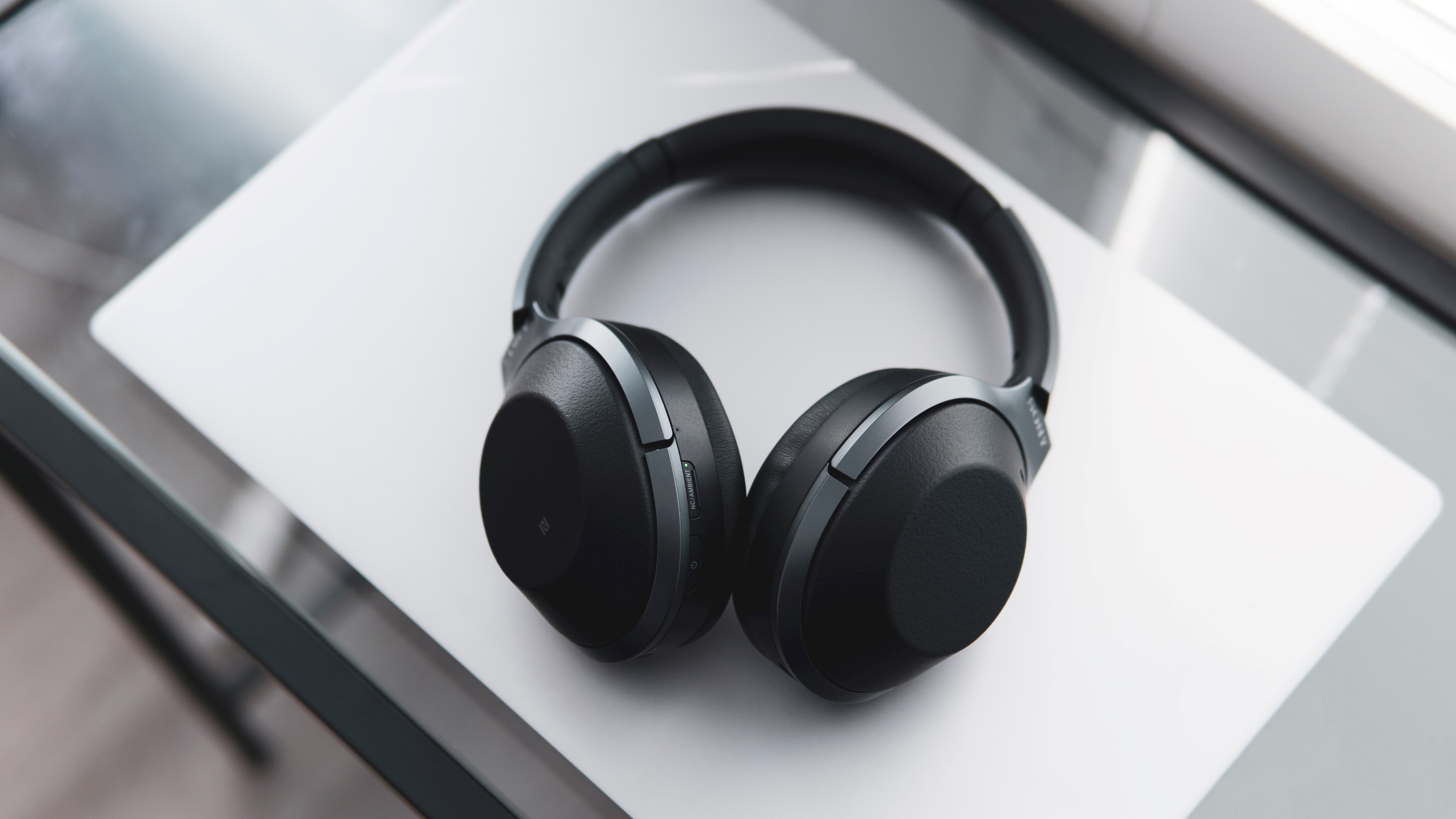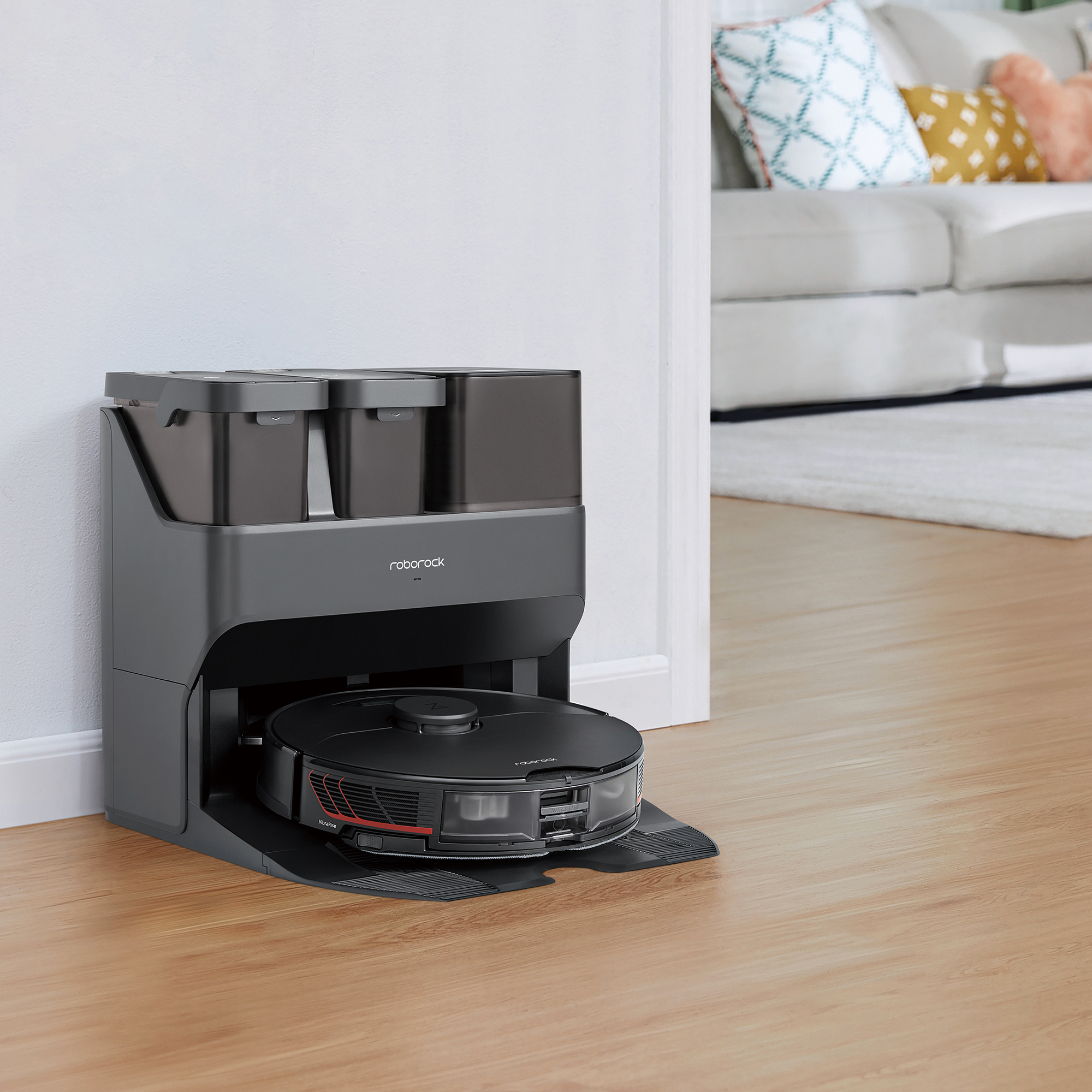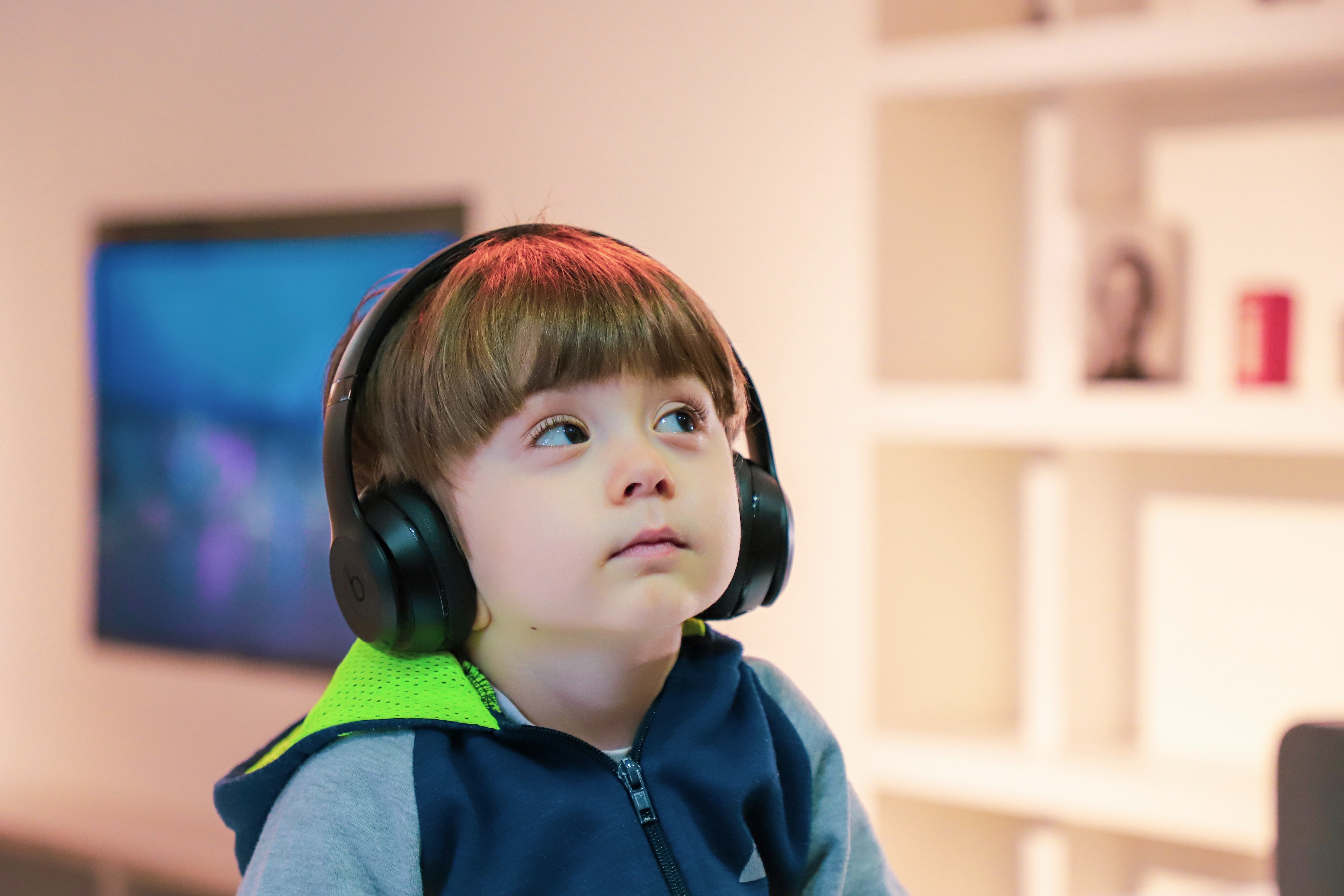When you’re looking for the best bottle for baby, it turns out that there are a lot more options than you might expect. Baby bottles come in a variety of shapes and sizes and make all kinds of claims about easier feeding and happier babies. But what do you actually need?
You might find that baby makes the decision for you: some babies just prefer particular bottles. And if you’re using a breast pump it makes sense to get bottles from the same brand, as they’ll fit the pump. It’s worth checking that your proposed bottle can take different sizes of nipple (the bottle’s, not yours!) as baby gets hungrier: what’s fine for a newborn will frustrate a bigger baby.
Be wary of claims about colic, the mysterious malady that makes babies cry after feeding: nobody really knows what causes it, let alone how to stop it. But it does seem that bottles with angled tops or air vents can reduce bubbles in milk, which reduces wind and results in less traumatic feeding.
Most plastic bottles are now BPA-free after a scare over the chemical leaking into liquids, and you’ll find glass and stainless steel options too. We find plastic the best all-rounder: you can heat it, it’s easy to clean and dishwasher safe, and it’s tough enough to survive the many drops it’ll experience in everyday use.
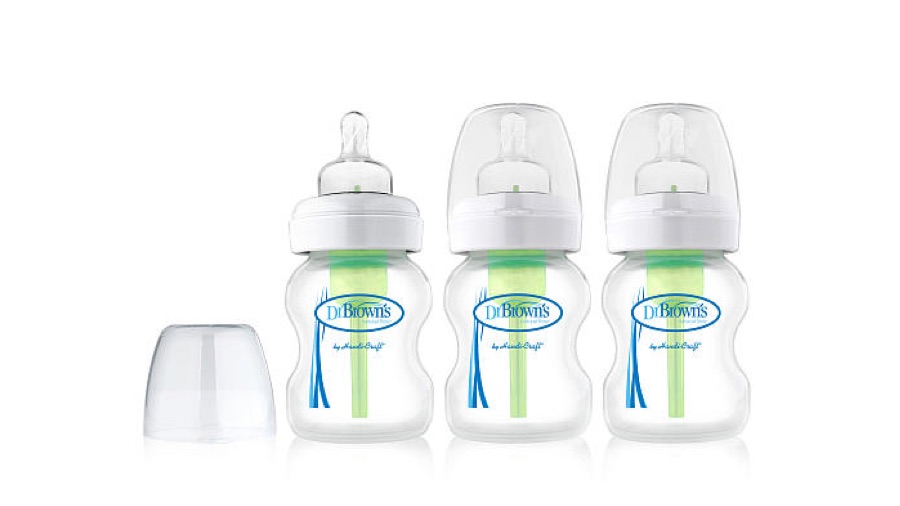
Dr Brown’s bottles introduced an internal vent to reduce air and hopefully make baby’s feed happier, and the latest version gives you the choice of vented or vent-free feeding. Microwaving the bottles isn’t recommended - not just for Dr Brown’s, but for any bottles; microwave heating can be uneven and create hot spots in milk - but they’re dishwasher safe and easy to clean by hand. The plastic is more than capable of withstanding drops too. The bottles come in two sizes, with the smaller one intended to be used as a vented bottle and the larger unvented as baby outgrows colicky symptoms, and there are five nipple sizes: from 0 months, from 3 months, from 6 months and two options for babies 9 months and older.
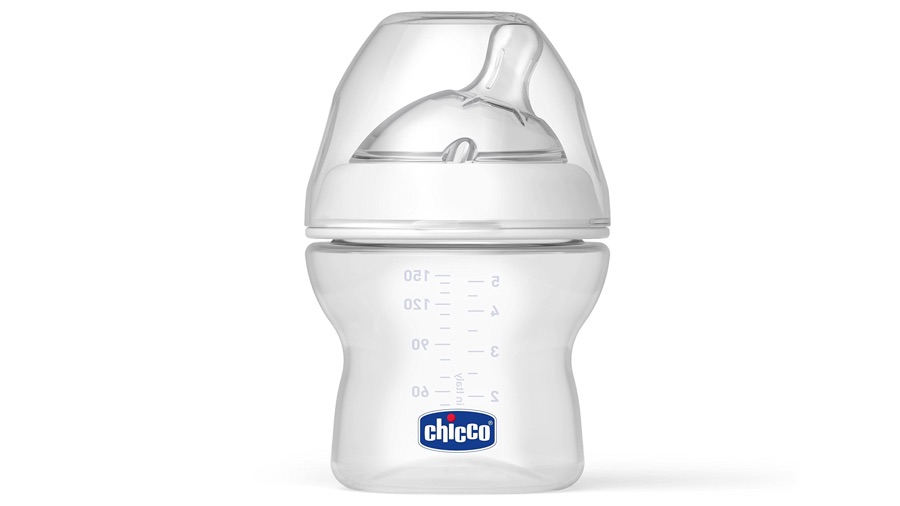
Chicco is one of the bigger baby brands, and its Natural Feeling range promises to reduce colicky symptoms by combining air vents with (optional) angled teats. That offers a more natural feeding position for baby, and because the top of the bottle remains full of milk throughout feeding it reduces the amount of air that baby is likely to gulp. The bottles are easy to clean by hand but dishwashing isn’t recommended and microwaving is a no-no too. Both straight and angled teats come in four versions: from birth, from 1 month, from 3 months and from 6 months. We’d go for the angled ones, though: there are stacks of mums and dads out there who feel the angled versions made feeding easier and did help minimise colic.
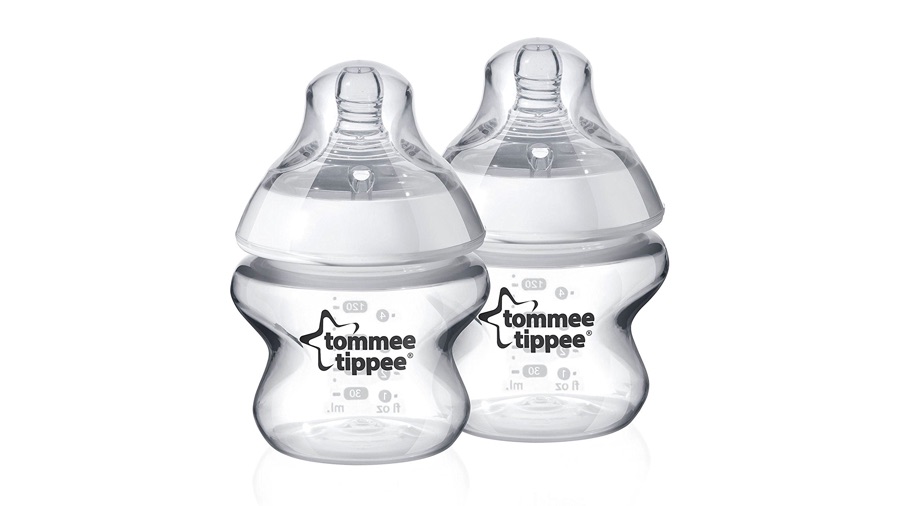
Many parents try multiple bottles before finding one that makes baby happy, and with our first rather picky baby her clear preference was for Tommee Tippee’s Closer to Nature. Our second took to them from the start, and we like them too: they’re easy to clean, and while they’re not officially dishwasher safe we haven’t had any problems with ours. They’re widely discounted and available everywhere, there are slow, normal and fast flow teats as baby gets older and there’s a clever bottle to cup transition trainer too. It’s just a shame that as well as the familiar white bottles the brand decided to introduce gender-specific pink and blue models. We’re sure they sell well, but what’s wrong with white?
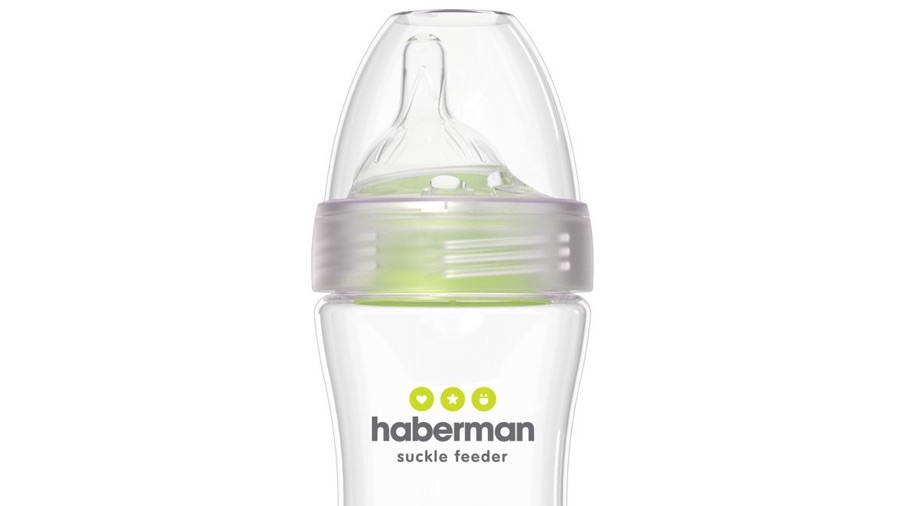
Many parents come to Haberman after what feels like a war: they’ve tried all the big name bottles but baby still has terrible feeds. And many of those parents come away singing Haberman’s praises while cursing it a little bit too, because while the bottles seem to be very effective at reducing colicky symptoms they’re also fiddly and a pain to clean. However, if you’re having trouble persuading baby to move from breast to bottle then these are definitely worth trying: the relief among Amazon reviewers is palpable. What’s different? The Haberman bottle uses not just a vent but a filter too, and the valve shuts off between suckles to ensure that baby doesn’t ingest any air, and the variable flow system aims to replicate breastfeeding as well as possible.
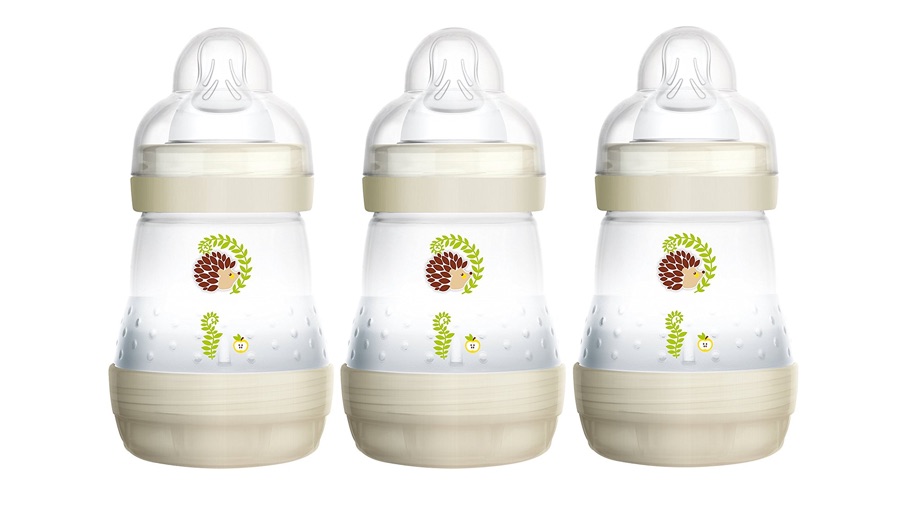
The big selling point here is that you don’t need a steriliser: these bottles are designed to be chucked in a microwave with some water and steam-cleaned in seconds. That’s great for small spaces and for travelling, so we’ll forgive the horrible pink and blue options and look at the lilac, green and ivory sets instead. They’re good value for money and it’s never bad to have one fewer baby-specific gadget cluttering up the kitchen, but multiple reviewers point out that you need to be careful when you assemble the bottles as they can leak if you don’t get the lid just-so.
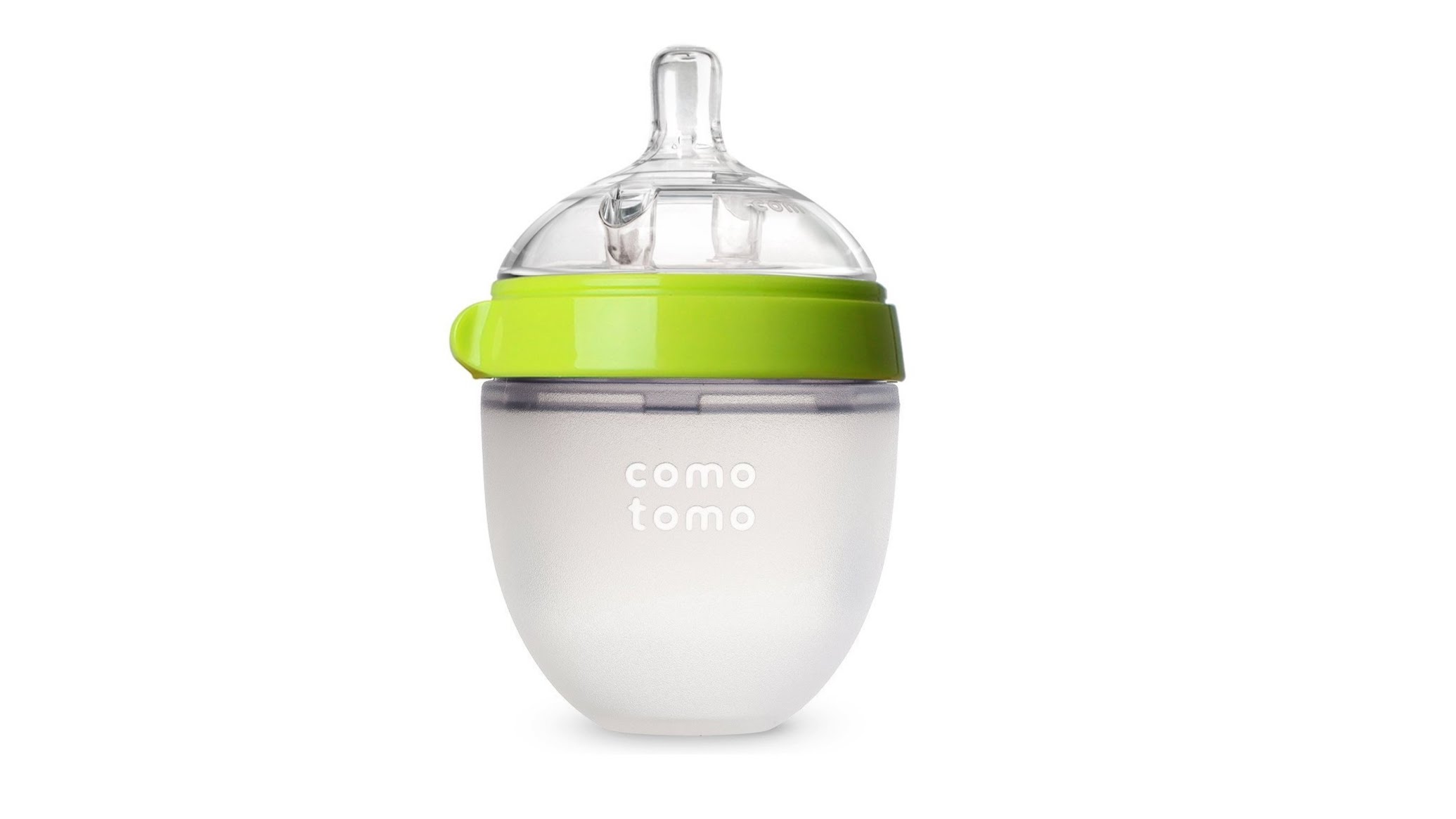
While comparatively expensive, this Comotomo bottle has been specifically designed to help babies transition from breastfeeding to bottles. It feature a breast-like teat, which has been refined to feel like a breast when touched or squeezed. The wide neck also allows for easy cleaning, while the vents should help to reduce the amount of air bubbles your baby swallows, which in turn, calm the symptoms of colic. The only downside is that it’s fairly expensive, which doesn’t make them the most cost-effective when it comes to buying and replacing bottles.
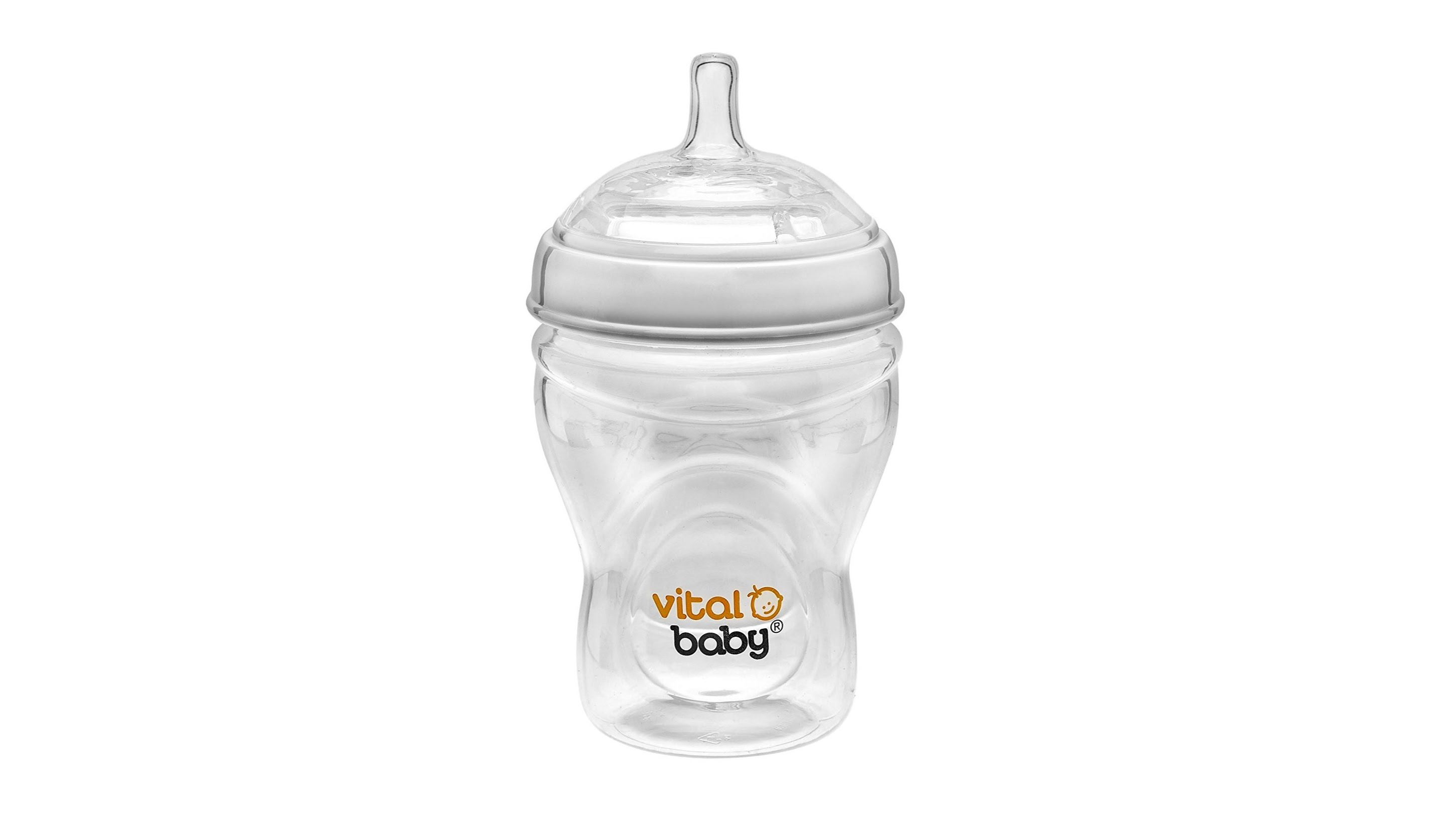
If you like the idea of a breast-like teat but can’t quite justify the price of our previous pick, this bottle from Vital Baby is a great cost-effective alternative. Similar to our previous pick, the teat mimics the breast in feel and action, as it pulls and flexes upon suckling. The teat itself has even been contoured to mimic the shape of a real one. The wide neck allows for easy filling and cleaning, while the vents should help to prevent colic; although many parents find other bottles more effective at doing this. As a pack of four, they’re incredible cost-effective, however some mums have found the measurement markings on the side fade quickly and they can be a bit leaky.
